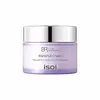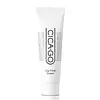What's inside
What's inside
 Key Ingredients
Key Ingredients

 Benefits
Benefits

 Concerns
Concerns

 Ingredients Side-by-side
Ingredients Side-by-side

Water
Skin ConditioningButyrospermum Parkii Butter
Skin ConditioningHelianthus Annuus Seed Oil
EmollientButylene Glycol
HumectantOlea Europaea Fruit Oil
MaskingGlycerin
HumectantSorbitan Stearate
EmulsifyingBeeswax
Emulsion StabilisingOlea Europaea Husk Oil
Skin ConditioningMacadamia Ternifolia Seed Oil
EmollientRosa Canina Fruit Oil
EmollientXanthan Gum
EmulsifyingAllantoin
Skin ConditioningScutellaria Baicalensis Root Extract
AstringentPaeonia Suffruticosa Root Extract
Skin ProtectingGlycyrrhiza Glabra Root Extract
BleachingTocopherol
AntioxidantRosa Damascena Flower Oil
MaskingCitronellol
PerfumingGeraniol
PerfumingWater, Butyrospermum Parkii Butter, Helianthus Annuus Seed Oil, Butylene Glycol, Olea Europaea Fruit Oil, Glycerin, Sorbitan Stearate, Beeswax, Olea Europaea Husk Oil, Macadamia Ternifolia Seed Oil, Rosa Canina Fruit Oil, Xanthan Gum, Allantoin, Scutellaria Baicalensis Root Extract, Paeonia Suffruticosa Root Extract, Glycyrrhiza Glabra Root Extract, Tocopherol, Rosa Damascena Flower Oil, Citronellol, Geraniol
Water
Skin ConditioningGlycerin
HumectantCetyl Ethylhexanoate
EmollientCaprylic/Capric Triglyceride
MaskingRicinus Communis Seed Oil
MaskingArbutin
AntioxidantTrehalose
HumectantArachidyl Alcohol
EmollientBetaine
HumectantCetearyl Alcohol
EmollientSericin
Skin ConditioningCnidium Monnieri Fruit Extract
HumectantViscum Album Extract
Skin ConditioningChamaecyparis Obtusa Leaf Extract
Skin ConditioningBehenyl Alcohol
EmollientArachidyl Glucoside
EmulsifyingPanthenol
Skin ConditioningAllantoin
Skin ConditioningXanthan Gum
EmulsifyingCentella Asiatica Extract
CleansingCitrus Aurantium Bergamia Fruit Oil
MaskingArginine
MaskingCarbomer
Emulsion StabilisingButylene Glycol
Humectant1,2-Hexanediol
Skin ConditioningScutellaria Baicalensis Root Extract
AstringentPaeonia Suffruticosa Root Extract
Skin ProtectingGlycyrrhiza Glabra Root Extract
BleachingCastanea Crenata Shell Extract
Skin ConditioningSalix Alba Bark Extract
AstringentLimonene
PerfumingLinalool
PerfumingCitral
PerfumingWater, Glycerin, Cetyl Ethylhexanoate, Caprylic/Capric Triglyceride, Ricinus Communis Seed Oil, Arbutin, Trehalose, Arachidyl Alcohol, Betaine, Cetearyl Alcohol, Sericin, Cnidium Monnieri Fruit Extract, Viscum Album Extract, Chamaecyparis Obtusa Leaf Extract, Behenyl Alcohol, Arachidyl Glucoside, Panthenol, Allantoin, Xanthan Gum, Centella Asiatica Extract, Citrus Aurantium Bergamia Fruit Oil, Arginine, Carbomer, Butylene Glycol, 1,2-Hexanediol, Scutellaria Baicalensis Root Extract, Paeonia Suffruticosa Root Extract, Glycyrrhiza Glabra Root Extract, Castanea Crenata Shell Extract, Salix Alba Bark Extract, Limonene, Linalool, Citral
Ingredients Explained
These ingredients are found in both products.
Ingredients higher up in an ingredient list are typically present in a larger amount.
Allantoin is a soothing ingredient known for its protective and moisturizingg properties. Because of this, it is often added to products with strong active ingredients.
Studies show higher concentrations of this ingredient can promote wound healing.
Though it can be derived from the comfrey plant, allantoin is produced synthetically for cosmetic products to ensure purity.
Learn more about AllantoinButylene Glycol (or BG) is used within cosmetic products for a few different reasons:
Overall, Butylene Glycol is a safe and well-rounded ingredient that works well with other ingredients.
Though this ingredient works well with most skin types, some people with sensitive skin may experience a reaction such as allergic rashes, closed comedones, or itchiness.
Learn more about Butylene GlycolGlycerin is already naturally found in your skin. It helps moisturize and protect your skin.
A study from 2016 found glycerin to be more effective as a humectant than AHAs and hyaluronic acid.
As a humectant, it helps the skin stay hydrated by pulling moisture to your skin. The low molecular weight of glycerin allows it to pull moisture into the deeper layers of your skin.
Hydrated skin improves your skin barrier; Your skin barrier helps protect against irritants and bacteria.
Glycerin has also been found to have antimicrobial and antiviral properties. Due to these properties, glycerin is often used in wound and burn treatments.
In cosmetics, glycerin is usually derived from plants such as soybean or palm. However, it can also be sourced from animals, such as tallow or animal fat.
This ingredient is organic, colorless, odorless, and non-toxic.
Glycerin is the name for this ingredient in American English. British English uses Glycerol/Glycerine.
Learn more about GlycerinGlycyrrhiza Glabra Root Extract is an extract of the roots of Licorice. It has been found to have several benefits such as skin hydrating, conditioning, and soothing.
One component, glabridin, has extra potent antioxidant and soothing properties. It has also been found to block pigmentation from UVB rays in guinea pigs.
Licorice Root also contains a flavonoid. Flavonoids are a natural substance from in plants. Flavonoids also have antioxidant properties.
Another component, glycyrrhizin, has been found to have anti-inflammatory and antimicrobial benefits. This may make licorice root extract effective at treating acne. However, more research is needed to support this.
Liquiritin is one of the flavone compounds found in licorice. It has been found to help lighten skin by preventing tyrosinase from reacting with tyrosine. When the two react, protein is converted to melanin. Melanin is the substance in your body that gives your features pigmentation.
Learn more about Glycyrrhiza Glabra Root ExtractPaeonia Suffruticosa Root Extract comes Peony plant. It has anti-inflammatory and antioxidant properties.
Emerging studies also show peony root may help reduce hyperpigmentation.
Ancient Chinese medicine has used peony root to treat dark spots, but studies are looking into this claim more.
Learn more about Paeonia Suffruticosa Root ExtractScutellaria Baicalensis Root Extract comes from the Baikal skullcap or Chinese skullcap plant. This plant is native to Northeast Asia and can be found in China, Mongolia, Korea, and Siberia.
In cosmetics, Scutellaria Baicalensis Root Extract provides antioxidant and anti-inflammatory benefits. This is due to the flavonoid composition of Scutellaria Baicalensis Root Extract.
In Chinese traditional folk medicine, Scutellaria Baicalensis Root Extract is used to help treat lung issues and hypertension.
Learn more about Scutellaria Baicalensis Root ExtractWater. It's the most common cosmetic ingredient of all. You'll usually see it at the top of ingredient lists, meaning that it makes up the largest part of the product.
So why is it so popular? Water most often acts as a solvent - this means that it helps dissolve other ingredients into the formulation.
You'll also recognize water as that liquid we all need to stay alive. If you see this, drink a glass of water. Stay hydrated!
Learn more about WaterXanthan gum is used as a stabilizer and thickener within cosmetic products. It helps give products a sticky, thick feeling - preventing them from being too runny.
On the technical side of things, xanthan gum is a polysaccharide - a combination consisting of multiple sugar molecules bonded together.
Xanthan gum is a pretty common and great ingredient. It is a natural, non-toxic, non-irritating ingredient that is also commonly used in food products.
Learn more about Xanthan Gum